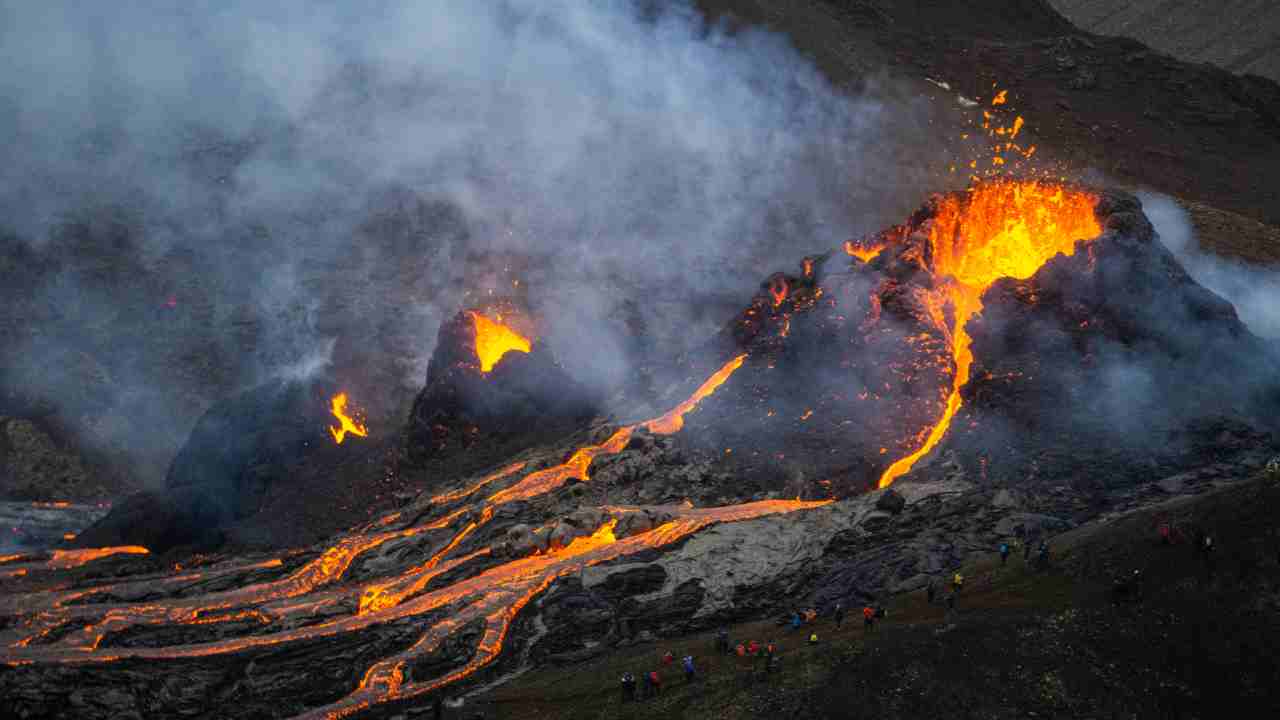Supervolcanoes: deadly for life, deadly for climate

A collaboration of Australian and Swedish scientists has found that current carbon dioxide (CO2) emission rates are 200 times that of even the most catastrophic ancient supervolcano event. Known as the ‘Great Dying’, that event about 252 million years ago wiped out at least 90% of the species on Earth, and 96% of marine animals.
But not all supervolcanic events are linked to mass extinctions.
Recent research led by Dr Qiang Jiang, then at Curtin University’s School of Earth and Planetary Sciences, Australia, indicates that some past supervolcanic events involved a slower rate of release of CO2 or less CO2 overall, or both, and that this was unrelated to the size of the eruption.
To investigate these ideas, Jiang and team looked at the two largest supervolcanic regions of the past 540 million years – approximately the time at which complex life forms emerged on Earth.
The largest, the Ontang Java province, is now split into three pieces around New Zealand and the Solomon Islands, explains Dr Hugo Olierook, study co-author and Research Fellow of Geology at Curtin, with most of it underwater or inaccessible. So the team turned its attention to the second-largest volcanic province, known as the Kerguelen large volcanic province – a body of solidified lava that’s three times the size of France in the southern Indian Ocean.
The researchers dated samples collected from Kerguelen using Argon-Argon dating, which indicated an age of around 120 million years.
“The new age data revealed that the Kerguelen eruptions were, in fact, active right across the global oceanic anoxic event 120 million years ago,” says Professor Fred Jourdan, Director of the Western Australian Argon Isotope Facility at Curtin. “But while they may have rapidly degraded the environment for marine organisms, it did not lead to a deadly mass extinction.”
Armed with powerful microscopes and lasers, the team then looked deep inside the basalt samples for tiny (10-micron diameter) frozen magma blobs known as inclusions and measured the pockets of volatiles – molecules that become gasses easily (water, CO2 and hydrogen sulphide, for instance) – released from the magma blob as it solidified and shrank.
When compared to similar gas studies of supervolcanoes associated with mass-extinction events, Jiang and team found that the Kerguelen province emitted at least five times less CO2 and at a rate 30 times slower than volcanic eruptions that wiped out entire life forms.
Out of the big five extinction events since animals arose, four have been attributable to supervolcanoes, which deplete oceans of oxygen and cause global climate change on time scales too small for evolutionary adaption of many land and marine animals.
Earth does have mechanisms through which carbon is drawn down into oceans, rocks and soils, explains Olierook. “Shells incorporate carbon into their structure, and oceans themselves draw down carbon into ocean beds, but this happens on the order of a few hundreds of thousands of years.”
When the rates of CO2 emissions far outpace the drawdown cycle – such as during CO2-rich supervolcanic events, then the balance is upset.
So, why are some supervolcanoes rich in CO2?
There are a few likely reasons. When hot magma rises to the surface, it can interact with the rock layers it cuts through. In the case of CO2-rich supervolcanoes, Olierook says that the magma has intruded through “organic rich sedimentary basins, heating them up and turning to a sort of peat and coal, the kind of material that easily becomes CO2”. In the case of the two largest supervolcanoes, they “sat in the middle of the ocean. So, there was no really big amount of organic-rich material there,” he says.
There is also the possibility that the rising magma itself is carbon-rich – something Olierook hopes to research further in the future.
Finally, the research team compared the current rates of CO2 emission with those during the supervolcanic events that resulted in catastrophic mass extinctions.
“Alarmingly our calculations also show that we are now currently emitting carbon dioxide 200 times faster than those supervolcanic eruptions that caused the most severe mass extinctions,” says Olierook.
While this sounds like bad news all around, it also contains a faint glimmer of hope.
“If we’re able to slow down our CO2 emissions now, we will actually see the effects of slowing it down now,” says Olierook. “We are certainly not at the point of having the highest ever CO2 in our atmosphere, yet – there was far more CO2 in the atmosphere, say 100 million years ago.
“So, if we can focus on slowing the rate of CO2 emissions down, we could get to a level where our planet can cope with the emitted CO2.”
This article originally appeared on cosmosmagazine.com and was written by Clare Kenyon.
Image: Shutterstock
